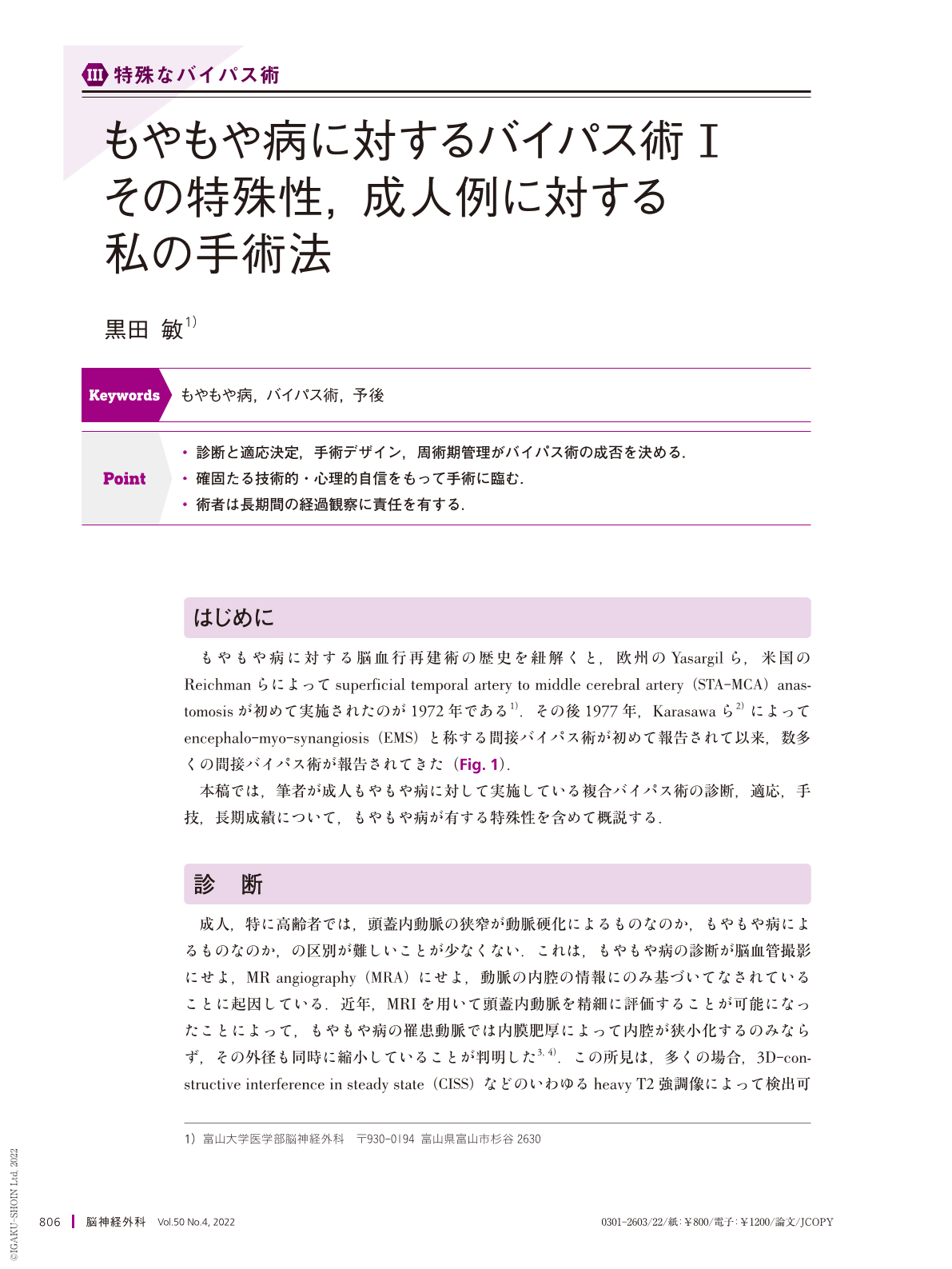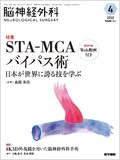Japanese
English
- 有料閲覧
- Abstract 文献概要
- 1ページ目 Look Inside
- 参考文献 Reference
Point
・診断と適応決定,手術デザイン,周術期管理がバイパス術の成否を決める.
・確固たる技術的・心理的自信をもって手術に臨む.
・術者は長期間の経過観察に責任を有する.
In this review article, the author describes the eligible patients, concept, surgical technique, and long-term outcome of the superficial temporal artery to middle cerebral artery(STA-MCA)anastomosis and the ultimate indirect bypass, called encephalo-duro-myo-arterio-pericranial synangiosis(EDMAPS)for adult moyamoya disease, in addition to the novel diagnostic criteria. The procedure dramatically improves or normalizes the cerebral blood flow immediately after surgery and thus contributes to preventing ischemic complications during and after surgery. However, the arterial wall of these patients is extremely thin and fragile; therefore, the surgeons should be trained extensively and have absolute confidence in their ability to perform this procedure. The surgeons should be aware that STA-MCA anastomosis frequently induces the hyper-perfusion phenomenon in adult patients with moyamoya due to prolonged cerebral ischemia. The extent of craniotomy determines the amount of surgical collaterals after indirect surgery; thus, a wide craniotomy including most of the frontal area, especially the medial frontal area, is critical to improve the postoperative prognosis. This procedure can markedly diminish the dangerous periventricular collateral channels and provides excellent long-term outcomes for up to 20 years after surgery. Long-term follow-ups longer than 20 years are important to monitor the patients with this unique and peculiar disease.

Copyright © 2022, Igaku-Shoin Ltd. All rights reserved.


